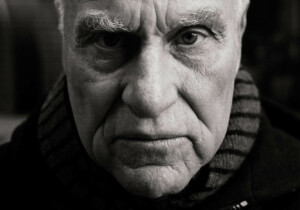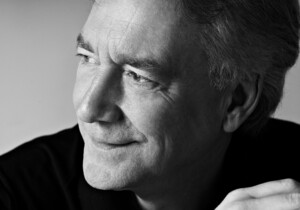Michael Sorkin, inimitable scribe of the built environment and leading design mind, passed away in New York at age 71 last Thursday after contracting COVID-19. Survived by his wife Joan Copjec, Sorkin leaves behind an invaluable body of work, as the following tributes—from friends, colleagues, peers—readily acknowledge. This is the first of a two-part series; the second can be read here.
Eric Owen Moss, principal, Eric Owen Moss Architects:
Michael Sorkin,
Where are you?
In sight of the invisible.
Loyal to that cause.
Michael the critic.
Michael the urbanist.
Michael the politico polemicist.
Michael the architect.
Michael the sardonic humorist.
Homeless and everywhere at home.
Educating the educators.
Colleague’s definition.
Friend’s definition.
Redrawing the criticalurbanistpolicoarchitecthumorist’s map.
In perpetuity.
So those in arrears can follow.
If they can.
Michael, where are you?
Eating at Rosa?
Laughing together at the prima ballerina and the qb?
Someone once told us, “the sun also ariseth.”
Just not today.
Love you.
Thom Mayne, founding partner, Morphosis Architects:
In the eighties when we were all starving, Michael would put me up in his apartment where I would occupy an unforgettable Pesce Feltri chair while we talked late into the night about the subject we both loved—architecture. Exhausted and enfolded in the wings of that chair, I would sleep and then awaken as though no time had passed before we were at it again. His voice, then as it was yesterday, was incisive and fearless and sometimes stinging. He challenged me repeatedly with words I often didn’t want to hear. But I trusted him—his comments were clearly coming from a place of generosity and honesty and commitment to his project which was, finally, about social justice.
He spoke of our awesome responsibilities, he spoke relentlessly of the power of architecture to change lives, he never stopped insisting that we must never stop fighting—for what we believed in, for a resistance to the status quo. His prodigious intelligence combined with his obvious love of humanity gave his words a rare gravitas and power. Finally, I ask myself why I am thinking about that room, that chair, that time, and I realize that it’s the gift of connection with people that made Michael so special. I’m thinking about that chair, those hours, that mind, and I, like every single person I’ve spoken with these last few days, am undone, feeling lost in a fog of sadness whose edges I can’t quite find.
Steven Holl, principal, Steven Holl Architects:
The shocking tragic news that Michael Sorkin was taken out by COVID-19 is unbelievable—tragically surreal. I had known Michael for over forty years. He invited me to an event on New Year’s Eve when I first arrived in New York City. He was a very rare architect of deep intellect and sharp wit. He was a champion of remarkable urban visions, and like our close friend Lebbeus Woods, he had fearless convictions about architecture.
Michael was a character like Cervantes’s Don Quixote in the best way. I remember him saying, “I may not achieve all my visions, but I will die fighting for them.” Let’s pay attention to this tragic moment in humanity. As Malebranche said, “attention is the natural prayer of the soul.”
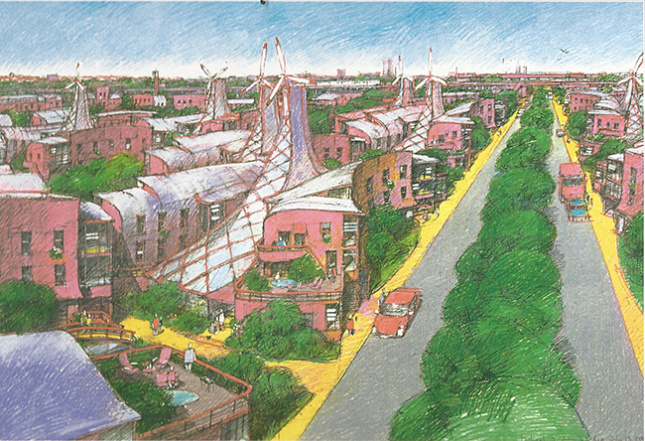
Deborah Gans, founding principal, Gans Studio:
I have been revisiting Michael’s responses to our troubles, both immediate and looming, Katrina and Jerusalem, climate change and global violence. There is always the razor-sharp text that lays bare difficult truths with their ethical demands and their physical consequences for architecture and planning. But then there is most often a drawn proposal, filled with exuberance, for our way out. He was this binary as a person—as committed to optimism as to confrontation with injustice, as joyful in his being, as devastating in his wit.
Through his writing, we understand the precariousness of New Orleans; but then, through his inspired design for a neighborhood of inhabited levees, we are hopeful. In crystalline prose, he dispatches the ethical follies of the Israel-Palestinian impasse, with its competing narratives of suffering, ownership, environmental stewardship, holiness, diaspora, and nationality; but then, in signature pink plans, he imagines a green armature for a new Palestinian capital in East Jerusalem, and we ask ourselves, “Why not?”
We need him now to help us unpack the rhetoric of an urbanism of distance and a city of essential services, and all the political dimensions of the plague that took him. We also need the plan that he would have given us to take back our cities after this deluge. Of that plan, we can be sure of one thing—it would be green, democratic, and joyful.
Achva Benzinberg Stein, landscape architect:
“Dahling,” Michael often said to me, “stop complaining and get to work.” And that is what he always did. Working at living as well as he could, teaching through mentoring, encouraging, opening our minds to new ideas and new ways to implement them, writing so very eloquently using his special language, laced with nuances, built with rich vocabulary, evidence to his immense knowledge in many fields.
When we met once in 1994, most of his work at that time was speculative. But he trusted in the power of a good concept to convince people to act. If money was needed to pay his helpers who depended on him, there was no question of what was to be done. “Dahling, you will see everything will be covered sooner or later. The main thing is not to be afraid.”
And that was his way in design, playing with objects and forms and never afraid to try or to admit failure, inventing solutions to any problem that entered his mind with incredible humor, with a love of people, with deep concern but strong belief in the potential embedded in the collective, in the City.
Farewell, my soul brother. I miss you terribly.
Lesley Lokko, dean of the Bernard and Anne Spitzer School of Architecture at the City University of New York:
I met Michael Sorkin once, briefly, at a conference in Johannesburg exactly a decade ago. It was at one of those post-event dinners where everybody meets everybody and the conversation was brief. I was a bit starstruck. We didn’t exchange contact details and were never in touch again. Nine years later, he put my name into the hat for a new dean at City College’s Spitzer School of Architecture. In the three short months since I’ve been “on seat,” as we say in West Africa, we met a handful of times at faculty meetings or occasionally in the corridor. Three weeks ago, he quickly organized a dinner with the Israeli filmmaker, Amos Gitai, simply because I mentioned, in passing, that I was a huge fan of his work. “I’ll get you guys together for dinner.” And he did. It was a brilliant dinner and Michael, although “off the wagon,” was a brilliant host. It was the last time I saw him.
Through the tributes that have flooded into my inbox over the past few days, I now understand that generosity, acumen, and the immensely social ability to foster—and retain—the trust, affection, and respect of so many widely dispersed and unrelated people was not only his hallmark, it was the man. It’s a cliché but, like most clichés, it’s rooted in truth: You don’t realize what you have until it’s gone.
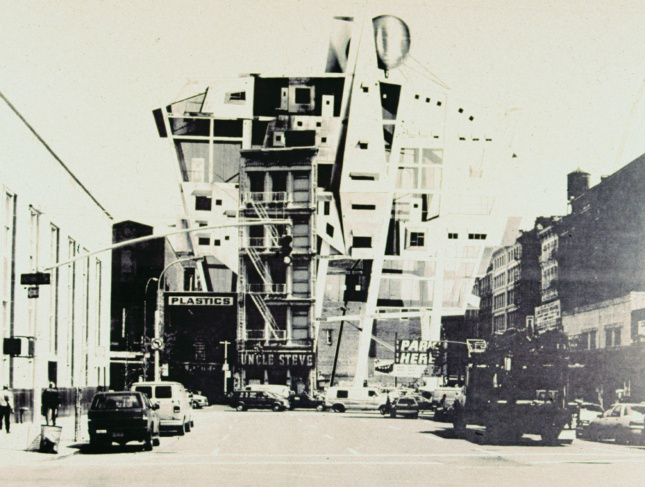
Harriet Harris, dean of Pratt Institute School of Architecture:
Thankfully, there are no easy words for a difficult man; one who challenged architects to grow some proverbial ethics, to stand up for others, to even stand up for themselves, and to resist the spatial crimes of unbridled neoliberalism.
I will remember Michael because he gave me and others permission to use architecture as a form of poetically charged, social protest. Few educator-practitioners have done this, in truth. I will not forget the debt I owe him. His impatience with the debilitating conventions of the canon super-charged our conversations, disrupted debates, and endeared him to students who were otherwise pressed up against the electric fence that divides practice from academe.
Michael insisted that there were 250 things we architects should all know about architecture, but perhaps there is only one thing to know about Michael: we are a much-diminished community without him.
Mike Davis, writer, activist, and urban theorist:
Michael Sorkin died today of coronavirus in an overcrowded hospital and it is a shattering loss. If some people consider me an “urban theorist” it’s only because in 1992 Michael conscripted me to write a chapter in his volume Variations in a Theme Park. His ideas have had an immense influence in shaping my own. He was by any measure the most important radical theorist of city life and architecture in the last half century. New Yorkers old enough to have been Village Voice readers in the 1980s when he was the paper’s architecture critic will never forget the war he waged against mega-developers and urban rapists like Donald Trump. Or how in Whitmanesque prose he weekly sang the ballad of New York’s unruly, democratic streets.
At a time when postmodernists were throwing dirt over the corpse of the twentieth century, Michael was resurrecting the socialist dreams and libertarian utopias that were the original soul of architectural modernism. When the peoples’ city was under attack he was inevitably the first to march to the sound of the guns. And then…his devilish glee, his kindness, his soaring imagination, his 50,000 volts of creative energy…. I’m drowning my keyboard in tears.
Michael, you rat, why did you go when we need you most?
Dean MacCannell, emeritus professor, Environmental Design & Landscape Architecture, University of California, Davis:
Death suddenly snatched Michael Sorkin away from us. But we can’t let him go. He was in our lives in too many ways. There are so many points of attachment no amount of time can undo them.
Michael was a teacher to us all—not just those fortunate enough to be enrolled in his seminars and studios. When he asked me to work on problems I knew little about—as he often did—he always overlooked my ignorance and demanded that I work with him. He was an architect beyond architecture. He knew exactly how to create the openings that would draw me fully into his schemes. Michael was enormously learned across many fields and disciplines, but he wore his learning lightly and deployed it strategically with a wicked sense of humor. He wrote beautifully, giving form to our consciousness an instant in advance.
Michael left behind his belief in the future promise of urban life together—creatively re-imagined. Unfinished work for the rest of us, and the necessary tools to do it: an unshakable confidence in humanity; in our capacity for self-governance; our ability to realize other enlightenment ideals; and to create a beautiful common ground.
Thank you, Michael. We’ll try to do our best, but dammit, it would be so much easier if you were still here to guide us.
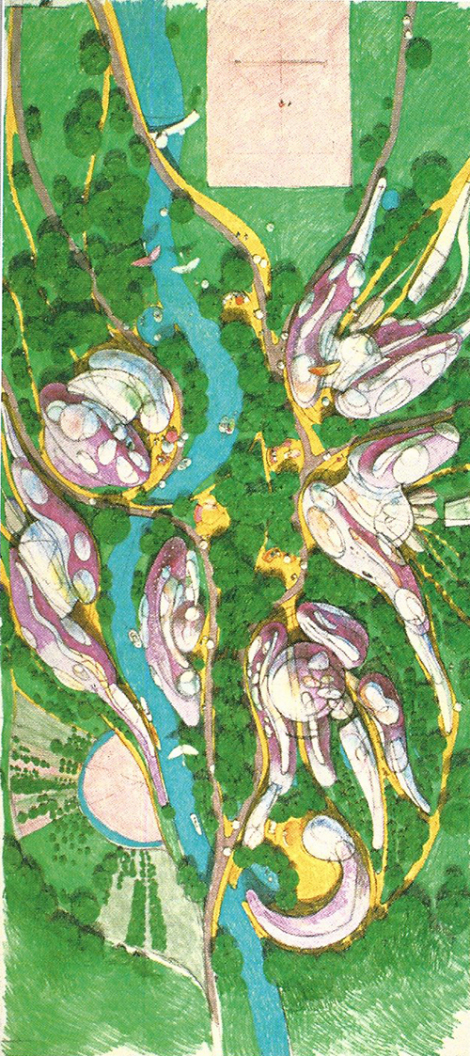
Eyal Weizman, founding director of Forensic Architecture and professor of spatial and visual cultures at Goldsmiths, University of London:
Locked down in stunned, helpless isolation with the exit sign switched off, I heard that Michael had died, without a warning or a goodbye. The contemporary prophet of public space and urban conviviality died in a hospital—one of the last places where physical proximity is still possible, indeed, unavoidable. The virus diagrams the kind of social interaction that Michael championed in a vibrant city that had now nearly totally closed down, the price of human contact having become too high.
On the evening when the horrible message arrived, the people of our London neighborhood, seeking some form of communion, stood each at their window to clap for the medical workers like those who were by Michael’s side in his last days, risking their lives to try to save his and ours.
Michael was our family friend—Alma, my daughter, was spoiled being his goddaughter—and so we were at our window, simultaneously sobbing, clapping, and hitting pots with wooden spoons, giving Michael the send-off we thought he’d appreciate. The rest of the mourning must be done in isolation—and my heart goes to Joan who cannot benefit from the proximity of those that loved them dearly.
Michael was also my architectural godfather. In a number of small but crucially corrective interventions, he put me on my path. He read my books when they were still drafts, giving comments, helping find titles and publishers. Only a few weeks ago he took the time to campaign for me when I was not allowed to travel to the United States, just as he often did for others less privileged.
We met in 1994, when, as a young admiring student at the Architectural Association (AA), I was one of those campaigning for him to be the new director of the school. When Michael finally won the vote and got the post, he decided to decline it, opting instead to pursue his own singular path: he set up his studio; founded the research organization Terreform and the publishing imprint UR (Urban Research); and became the Director of Graduate Design at the City College, where he was Distinguished Professor. In short, he constructed on his own a polymorphous entity through which to realize various aspects of his wide urban visions. At the same time, he continued to advocate his ideas in a stream of essays and books, and to sketch them in numerous visionary schemes and drawings. (Many of the latter are still unpublished, but Joan assures me that they will be coming out soon.)
Drawing on the vocabulary of 1970s New York activism, he expanded the spectrum of architectural and urban action: sit-ins, town-hall-meetings, petitions, appeals, the writing of codes and bills of rights. Learning from his struggles with the kind of New York developers that now run the United States, he brought his sense of urban justice, and feisty activism to Palestine, Northern-Ireland, and the U.S.-Mexico border. Since architecture was part of the problem, it owed a certain debt, and Michael encouraged architects to pay up by inventing solutions.
In 1998, an impish trickster, Michael seduced a group of Palestinian and Israeli architects and other intellectuals to a conference on occupied and segregated Jerusalem at a lake-side villa in Bellagio, Italy. It was here that I first met Suad Amiry, Rashid Khalidi, Omar Yusuf, and Ariella Azoulay. We listened together as Michael insisted, more optimistically than most of us, that we could use architecture to do something about this injustice, although he understood that, by itself, unaccompanied by the fundamental political changes we must all struggle for, architecture could do very little. His subsequent book projects on Palestine—The Next Jerusalem, Against the Wall, and Open Gaza—demonstrate what he meant.
He was right, at a time when the grip of architecture tightens all around us, when the builders of walls, towers, and digital surveillance systems are in charge, and when authoritarianism is using the global health emergency to encroach on our civil liberties—we all need to channel something of Michael and continue the fight. He will now bring his to gods and angels. Go on Michael, give them hell!
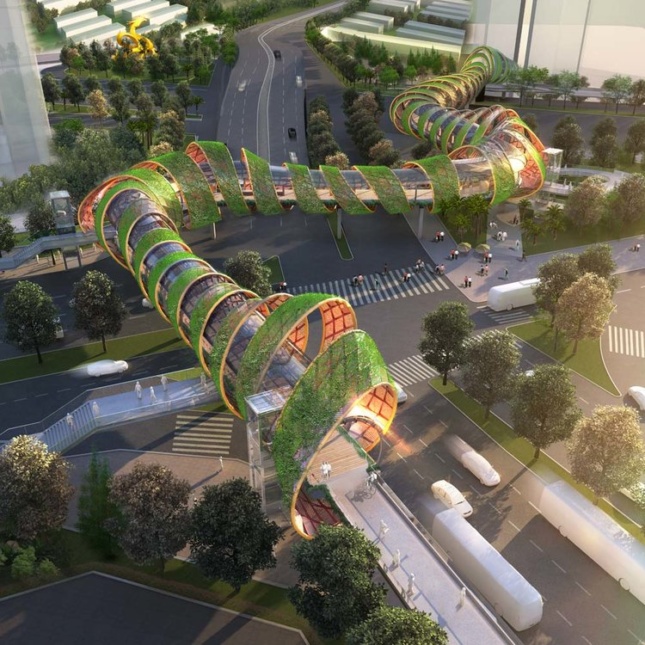
Andrew Ross, professor of social and cultural analysis at New York University:
When I moved to New York in the late eighties, I got into the habit of seeing the city through Michael’s eyes, and I suppose I always will. Already a unique kind of critic, he then turned into a doer, which I especially admired.
We worked together in various ways, but most memorably on two competition juries. The first was for a Public Space project associated with the Atlanta Olympics. The aggressive charm with which Michael lobbied fellow jury members on behalf of his picks won me over. I became his willing accomplice, and we went all in for the most audacious entries, knowing full well that, in the real world, the odds of them being greenlighted were slim.
Many years later, we both had the idea, independently, of mounting an alternative to the competition for the proposed Guggenheim Helsinki, and so we joined forces to see it through. In sheer expenditure by firms all over the world, the official competition was the most labor-intensive and costly ever seen. A true bonfire of the vanities. Ours was run on a budget of five thousand euros and operated more like a think tank for ideas for infusing arts and urbanism. The whole thing brought out the best in Michael—his fierce distaste for architectural elitism, his appetite for popular quality, his spontaneous fellow-feeling, and, yes, his legendary sense of mischief, now so sadly extinguished.
Daniel Monk, George R. and Myra T. Cooley chair in peace and conflict studies at Colgate University:
When Michael Sorkin died last week, he left behind the draft of a work—a soon-to-be published volume of essays in honor of Mike Davis—that we had been editing together. In it, Michael records his own first encounters with the national mall in Washington, D.C. In these memories of “the American agora,” he presents the immanent logic of the mall’s development, amounting to a perpetual betrayal of its promise. If, as so many others have already noted, Michael could always adopt the standpoint of hope, good humor, and mischief in the face of despair, this is because he knew that it is precisely in broken promises that a regulative ideal—the demand for political freedom he always championed—was being kept alive, despite our collective efforts to close our eyes and pretend otherwise.
Charles Waldheim, John E. Irving professor of landscape architecture at Harvard’s Graduate School of Design:
I was fortunate to know Michael Sorkin as a public intellectual, as a personal role model, and as a friend. His loss leaves an enormous void in the heart of the city and in those of us who have committed our lives to understanding it. Michael brought a journalist’s eye and a critic’s wry wit to writing about the city, describing it as a collective social construct and a set of lived experiences. His insightful prose cut through layers of accumulated capital, both economic and cultural. His wildly imaginative design propositions for intervening in the city double as a form of cultural criticism, revealing the archeology of power structures, class construction, and collective resistance.
Most contemporary discourse on the design of the city has atrophied into one of two mutually exclusive and ultimately inadequate narratives. On the one hand, our discussions of the city devolve into an exclusive preoccupation with policy, participation, and governance as disconnected from its spatial and cultural contexts. On the other hand, our accounts are equally often constrained to the description of individual sites, projects, and protagonists as architectural singularities lacking any meaningful connection to the collective. Describing the city as a collective cultural project was Michael Sorkin’s great gift to us. Who among us will take up that project now?









